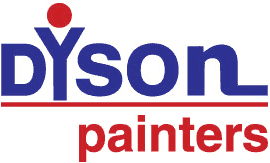When it comes to maintaining commercial properties, walls and ceilings often don’t get the attention they deserve—until cracks, bulges, or stains start making themselves known. In these situations, the dilemma most property owners face is whether to repair the plaster or replace it entirely.
Choosing between commercial plaster repair and full replacement isn’t always straightforward. It’s a decision that hinges on factors like the extent of the damage, the property’s age, aesthetics, and—perhaps most importantly—cost-effectiveness. Ignoring damaged plaster can lead to larger problems down the line, but overspending on replacement when repairs would suffice can hurt your bottom line too.
In this article, we’ll help you understand what causes plaster damage in commercial settings, the signs you shouldn’t ignore, and how to assess whether repair or replacement is the smarter financial move for your property.
Commercial Plaster Damage
Commercial buildings experience a unique set of stresses that residential homes often don’t. From higher foot traffic to heavier equipment and frequent layout changes, these environments can take a toll on internal wall finishes. Plaster, though durable and elegant, is no exception. Understanding what causes plaster damage is the first step in determining the most practical solution—repair or replacement.
Common Causes of Plaster Damage in Commercial Properties
1. Moisture Infiltration
Moisture is enemy number one when it comes to plaster. Leaky roofs, damaged plumbing, or poor ventilation can introduce water into walls and ceilings. Over time, this moisture weakens the plaster, causing it to bubble, crack, and even crumble. In some cases, it can lead to hidden mould growth, which poses health risks and further compromises the structure. For businesses, professionals often cite water damage as a leading reason for service calls.
2. Impact Damage
Commercial spaces are active zones—equipment is moved, furniture is rearranged, and sometimes walls take the brunt of it. From hand trolleys scraping corners to forklift bumps in warehouses, impact damage is inevitable. This kind of wear can lead to dents, gouges, or even holes in the plaster, especially in high-traffic corridors or storage areas.
3. Age-Related Wear
Even the most pristine plasterwork has a lifespan. In older commercial buildings, plaster can begin to deteriorate naturally due to age. Materials expand and contract over time, especially in buildings that aren’t climate-controlled. This slow degradation often appears as fine cracks or chalking surfaces, indicating the need for maintenance.
4. Poor Previous Repairs
Not all commercial plaster repairs are created equal. If the last contractor cut corners—maybe they used the wrong materials or didn’t properly address the underlying issue—the plaster may now be failing again. It’s not uncommon for property managers to uncover multiple layers of patchwork repairs that were merely cosmetic, not structural.
Signs You Shouldn’t Ignore
Keeping a watchful eye on your walls can save you time and money in the long run. Some signs may look harmless, but they could point to deeper issues. Knowing when to call in commercial plastering services can help prevent extensive damage and higher costs later on.
1. Cracks: Hairline vs. Structural
Hairline cracks are common and usually cosmetic but if they widen, spider out, or appear near structural joints, they might indicate movement or settling issues. Structural cracks require immediate professional assessment.
2. Bubbling, Sagging, or Flaking
These signs are often a dead giveaway of water damage or underlying adhesion issues. Bubbling and sagging plaster suggest moisture intrusion, while flaking can mean the surface is deteriorating due to age or improper paint application.
3. Mould and Water Stains
Yellowish stains or the unmistakable signs of mould growth are serious red flags. Not only do they indicate prolonged exposure to moisture, but they also raise indoor air quality concerns—especially problematic in offices, medical centres, or retail spaces.
4. Separation from Substrate
If the plaster is pulling away from the underlying lath or drywall, it’s no longer properly anchored. This can be caused by vibration, moisture, or simply age. It’s a clear indicator that more than just a quick patch job is needed.
When to Choose Commercial Plaster Repair
If your commercial property has damaged plaster, the good news is that you might not need a complete overhaul. In many cases, commercial plaster repair is the smarter, faster, and more cost-effective solution. Understanding when repair is the right choice can help you avoid unnecessary expenses while keeping your building safe, functional, and visually appealing.
1. Minor to Moderate Cosmetic Damage
Superficial issues like hairline cracks, surface flaking, or small dents from accidental bumps are typically easy to repair. These types of damage are common in commercial environments where walls often experience wear and tear from daily activity. If the underlying structure is sound, there’s no need for drastic measures. Commercial plastering services can restore the area without replacing the entire surface.
2. Isolated Water or Impact Issues
If moisture damage or impact-related deterioration is limited to one section of a wall or ceiling, repair is usually sufficient. This is especially true when the source of the issue (e.g., a plumbing leak or equipment collision) has already been resolved. Targeted commercial plaster repair avoids disrupting large areas of the building and can be completed relatively quickly.
3. Budget Constraints or Quick Turnaround Needed
Full plaster replacement can be labour-intensive, time-consuming, and expensive—something many commercial property owners prefer to avoid if possible. If you’re working within a tight budget or need the space operational again quickly (think retail stores or hospitality venues), a professional can deliver quality results in a fraction of the time and cost of a full replacement.
4. Heritage Buildings Where Replacement Isn’t Feasible
Older commercial properties, especially heritage-listed buildings, often feature original plasterwork that contributes to the property’s character and historical value. In these cases, full replacement may not be allowed—or desirable. Skilled commercial plaster repair specialists can carry out precise, seamless fixes that preserve the authenticity of the structure while restoring its integrity.
Benefits of Repairing Over Replacing
1. More Affordable Upfront
Commercial plaster repair costs significantly less than full replacement. By addressing only the affected areas, you save on materials, labour, and time—making it an ideal solution for businesses trying to manage costs.
2. Faster Project Timelines
Repairs can often be completed in a matter of hours or days, depending on the extent of the damage. This means less downtime for your business and fewer interruptions to daily operations.
3. Minimal Disruption to Operations
Unlike full replacement which may involve tearing down large sections of walls or ceilings, repair work is usually localised and less invasive. Many commercial plastering services can even schedule work outside of business hours to reduce disruption.
4. Eco-Friendly (Less Waste)
Repairing plaster instead of replacing it helps reduce construction waste, making it a more sustainable choice. For businesses with green initiatives or ESG commitments, this approach aligns with environmentally responsible practices.
Schedule Your On-Site Inspection
When Replacement Becomes the Smarter Option
1. Widespread Cracking or Sagging
If your walls or ceilings show large areas of cracks especially those that spread in a spider-web pattern or sagging sections, this likely points to more than superficial wear. When plaster starts separating from its base or losing structural integrity across large sections, spot repairs become ineffective and unreliable. This is when replacement isn’t just smarter, it’s necessary.
2. Structural Concerns
When plaster damage is linked to movement in the structure itself such as subsidence, framing issues, or repeated stress cracks near joints, replacing the plaster after correcting the core issue is often the safest route. A fresh application over a stabilised substrate ensures a longer-lasting, more secure finish.
3. Significant Water/Mould Damage
Water stains are often just the tip of the iceberg. Prolonged exposure to moisture can result in deeply saturated plaster, hidden mould growth, and even rot within timber or drywall behind the plaster. In these cases, patching is merely cosmetic. A complete removal and reinstallation is usually required to ensure health, safety, and compliance with building standards.
4. Previously Patched Multiple Times
If the same area has been patched over and over again, the underlying problem may never have been fully resolved. Layers of repair materials can lead to uneven surfaces, flaking, or poor adhesion. When your wall resembles a plaster quilt more than a clean finish, it’s time to call in experienced commercial plastering services for a fresh start.
Long-Term Cost Benefits of Replacement
1. Improved Durability
New plaster systems, especially when paired with updated wall technologies, offer improved adhesion, strength, and moisture resistance compared to older materials. This means fewer issues and less risk of failure down the line.
2. Reduced Future Maintenance Costs
While the upfront investment is higher, full plaster replacement minimises the risk of recurring repair bills. You’re less likely to deal with callbacks, tenant complaints, or emergency patch jobs if the job is done right the first time.
3. Opportunity to Upgrade Wall Systems
Replacing plaster gives you the chance to enhance wall insulation, fire resistance, or soundproofing—important features in commercial environments like offices, hospitality venues, or retail centres. It’s also an ideal time to address any wiring or plumbing upgrades behind the walls.
Cost Comparison – Repair vs. Replacement
Whether you’re opting for a quick commercial plaster repair or a full replacement, several variables will shape your final quote. Understanding these factors can help you make an informed, budget-conscious decision.
1. Size of Affected Area
Naturally, larger areas cost more to fix or replace. However, the cost per square metre for commercial plaster repair may be higher for small, isolated repairs compared to larger replacement jobs due to setup and labour minimums.
2. Accessibility of the Site
Ceilings, stairwells, and high walls can drive up costs because of the scaffolding, lifts, or extra safety measures required. Difficult access means more labour time and potential site disruption.
3. Type of Finish and Materials Used
Basic skim coats are more affordable than high-end textured finishes or heritage-matched materials. Additionally, moisture-resistant or fire-rated plasterboards used in modern systems may come at a premium.
4. Labour Intensity
Intricate or detailed plasterwork takes more time and skill to replicate. The more complex the job, the higher the cost, whether you’re repairing or replacing.
Hidden Costs to Watch Out For
1. Delayed Repairs Leading to Larger Damage
A small crack today can turn into structural damage tomorrow. Waiting too long to act might mean what could’ve been a simple repair now requires full wall or ceiling replacement.
2. Business Downtime or Tenant Complaints
Whether it’s noise, dust, or blocked access, commercial plastering can disrupt daily operations. If the damage is visible to clients or disrupts tenants, delays in repair or replacement can affect your reputation—and even result in lost revenue.
3. Compliance Issues for Visible Damage
In many industries, visibly damaged walls can raise red flags during inspections. From hygiene concerns in hospitality and healthcare to safety hazards in office spaces, ignoring plaster problems could risk non-compliance and costly penalties.
How to Decide What’s Best for Your Property
After weighing the pros and cons of commercial plaster repair versus full replacement, the next step is clear: make an informed decision that protects both your property and your budget. But with so many variables involved—damage extent, building age, use case, compliance concerns—it’s not a decision you should make alone.
Professional Assessment is Key
One of the biggest mistakes property owners make is trying to self-diagnose plaster damage based on appearances alone. What looks like a harmless crack might be a sign of deeper issues, while a stained ceiling might not need a full rip-out. That’s why hiring licensed commercial plastering services is essential.
An experienced plastering contractor will provide a detailed site assessment, not just a quote. They’ll inspect not just the surface, but the integrity of the substrate, the building’s movement history, and any underlying moisture problems.
A professional plaster damage report should include:
- The type and extent of plaster damage
- The root cause of the problem (moisture, age, impact, structural shift, etc.)
- Recommended solutions: targeted commercial plaster repair or full replacement
- Project timeline and materials breakdown
- Estimated costs and expected maintenance longevity
Restore Your Walls with Expert Commercial Plaster Repair
Don’t let damaged walls disrupt your business image or operations. Whether you’re dealing with cracks, stains, or sagging ceilings, our commercial plaster repair experts are here to restore your space—quickly, cleanly, and cost-effectively. With tailored solutions, licensed professionals, and a commitment to quality, we ensure your commercial property looks and performs its best. Serving Hobart and surrounding areas, Dyson Painters specialises in minor repairs and full-scale restorations.
Ready to fix it once and for all? Contact us at admin@dysonpainters.com.au or call us at 0420-213-214 for a free assessment and discover why local businesses trust us for all their plastering needs.





